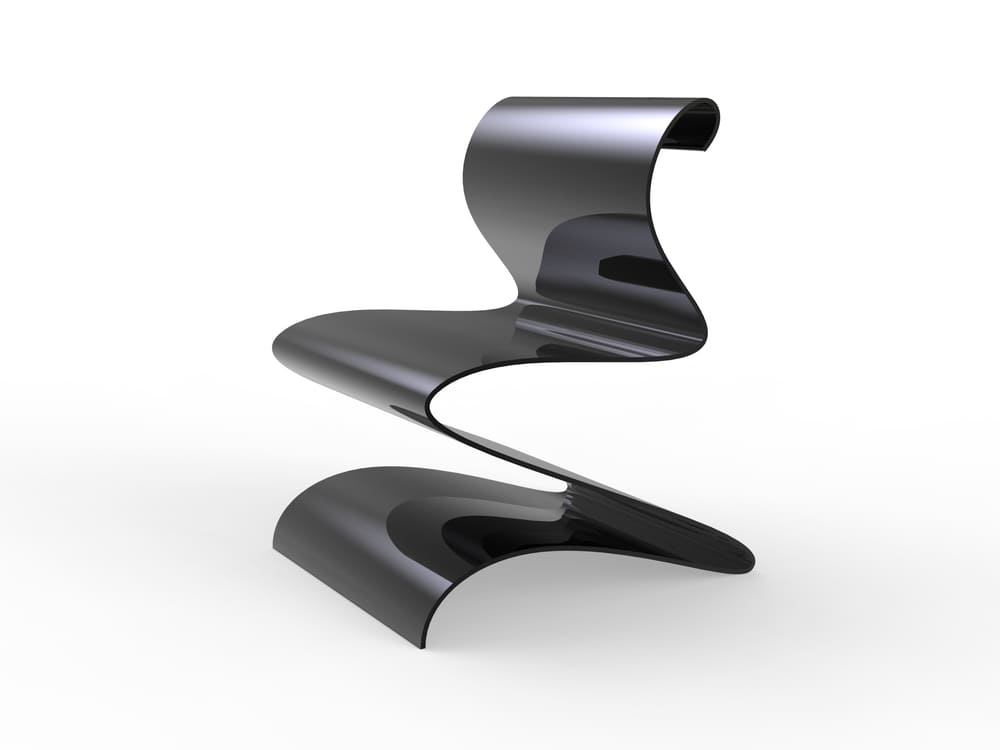Photo Zieta Studio
Steel, iron and other metals and alloys are traditionally used in industrial and commercial construction. However, with moderate and reasonable use, and in combination with other textures and materials, steel items are also frequently found in interior design. A closer look shows that this practice goes back several centuries.
Hardly anyone can tell the year or even the century in which the first iron decorative items appeared. In the days of knights, no medieval castle could do without them. Blacksmiths made wrought iron grates for fireplaces, hinges and locking bars for doors, and fittings for wooden furniture. However, most of them had purely utilitarian uses at that time. In addition, the knights’ armour, shining swords and riveted shields that adorned the walls of those very castles may well be classified as medieval steel decorations.
Today, things are very different. Of course, there are also highly practical items such as stainless steel sinks or fridges with fronts designed to give the stainless steel look. But steel and other metals are much more often used for decoration.

The widespread fashion of using metal for interiors began in conjunction with the high-tech style in design and architecture. It originated in the 1970s and reached its peak in the 1980s. This style is known for practicality and lack of excessive decorative flair. This led to the extensive use of glass, polymers, chrome-plated surfaces and stainless steel. Indeed, there are many advantages of using stainless steel in interior design instead of other materials, including strength, robustness and durability.
However, too much metal can make a room look like a warehouse or a medical laboratory. So, when choosing steel items for interior design it is important not to go too far, and to find a reasonable balance between the materials used.
Today, there is another design trend that makes extensive use of steel: the loft style. In this case, it is not stainless steel that is most often used, but products made of ordinary steel grades. The secret lies in the origin of this architectural trend. The word “loft” refers to a building’s upper storey or an elevated area in a room directly under the roof. In the 1940s, artists and designers in the US began to convert abandoned factory buildings in New York City to use as studios. After 15-20 years, this style reached its peak. What were once industrial facilities became venues for the cultural elite. Along with this transformation, their price and value increased, with little or no effect on their interior decoration.

While the loft and high-tech styles take similarly minimalistic approaches, their underlying motives are different. In the mid-twentieth century, the bohemian tenants of industrial premises did not have the resources to redesign and refurbish them. So, they retained the exposed steel staircases, beams, pipes, brick walls and other interior features that you would normally try to hide and decorate in a conventional flat. As time went on, the style made its way out of the revitalised industrial areas. Today, people deliberately renovate their flats and offices to make them look like old factories and workshops.
Modern trends make use of metal in interior design in almost any style: eclectic, country or classic. This includes old-style kitchen utensils, upholstered sofas and steel-framed armchairs, or fireplace and mirror frame decorations. Modern technology even makes it possible to produce ceramic tiles with a thin metal coating to give the impression that entire walls and floors are covered with steel sheets. Their surface can imitate patina, rust (as in Corten steel) or a normal steel shine. Products made of steel can be painted, which significantly improves their appearance and increases their resistance to corrosion.
However, steel is used for interiors not only because of its visual characteristics. It has several other useful properties:
- Steel’s durability makes it possible to reduce future costs
- Steel’s robustness allows interior elements to withstand high loads
- Stainless steel’s resistance to moisture prevents colour changes
- Steel surfaces are easy to maintain and clean
- Steel surfaces are environmentally friendly and hypoallergenic, which prevents the growth of mould, bacteria and fungi
- Steel offers good compatibility with other materials (wood, glass, textiles, stone and so on)
Probably the only significant disadvantage of steel is its high weight. This, too, appears to be something that can be dealt with. A team of designers from Poland and Switzerland has developed a remarkable technology to produce inflatable steel products, including furniture. They are made from steel sheets with a thickness of up to 1 millimetre from which templates are cut out, edge welded and inflated with air. Steel’s ductility allows it to change its shape even when it is cold. This makes it possible to produce lightweight, robust furniture. A chair manufactured using this process can withstand a load of up to 2 tonnes. Designers believe that this technology can eventually be used for wind power applications, in space and to manufacture road barriers.
In recent years, Ukraine has also seen growing demand for decorative steel items and even furniture made of steel. Many small design studios now produce bar countertops, armchairs, tables, chairs, shelving units and other small furniture made with steel. Some of them openly collaborate with or even are affiliates of Ukrainian metal trading companies. This is not surprising given that Ukraine is a global leader in production of steel and steel rolled products, which means that it has no shortage of these materials. The only limits are the imagination of designers and possibilities of potential consumers, of which there are far more today than there were in the Middle Ages.
